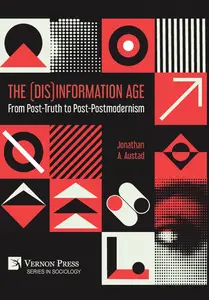
Free Download The (Dis)Information Age: From Post-Truth to Post-Postmodernism
by Austad, Jonathan;
English | 2024| ISBN: 9798881900045 | 275 pages | True PDF | 5.42 MB
There has yet to be a strong consensus regarding when and if postmodernism ended. As such, there is no agreement about the new age’s name, origins, or tenets. Nealson’s ‘Post-Postmodernism: or The Cultural Logic of Just-in-Time Capitalism’ leaves out the impact of the internet and social media. Other books fail to explore post-postmodernism within a larger social-political framework and do not examine the cultural trends that have responded to such forces. This book undertakes these complexities by examining the interplay between the sociohistorical events and visual culture of the last two decades and posits that postmodernism ended with the terror attacks on September 11, 2001. Few events have such a tremendous impact on the collective consciousness that they cause immense social, political, and cultural changes, but the terror attacks marked the beginning of a new era filled with greater anxiety and uncertainty. The Bush Administration used news outlets to promote a false narrative and mislead the public, manipulating information to further its agenda and altering the nature and efficacy of mass media and ultimately launching society into an age of disinformation. ‘The (Dis)Information Age’ is comprised of two main phenomena: post-truth and post-postmodernism. Truth and reality have become increasingly difficult to ascertain in this post-truth world and created increased skepticism towards those in the government and media. The rise of the internet and social media has exacerbated this trend by individualizing facts and data, further fragmenting society along ideological lines. The result is people share fewer common ideas than in previous eras and are no longer living in a shared reality. Post-postmodernism, on the other hand, is a cultural movement that has responded to post-truth’s weaponization, misuse, and individualization of information. Artists of post-postmodernism seek greater connectivity and common ground to combat individualized information and ideological warfare. To them, truth resides in the collective. This study examines the intricate relationship between recent socio-historic events and cultural manifestations that respond to them to better understand the world in which we live.










Leave a Reply
You must be logged in to post a comment.